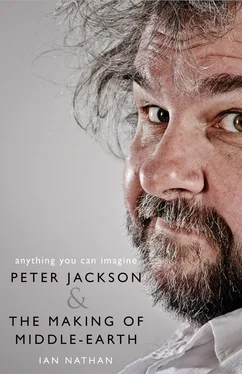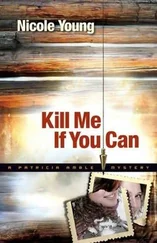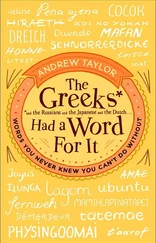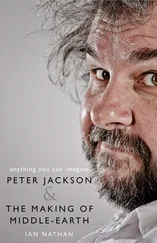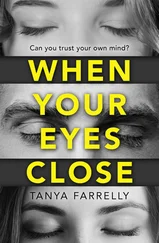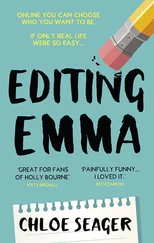Ordesky remembers joining Walsh and Boyens at the shoot’s hotel HQ while on location in Queenstown as the dreaded Council loomed in the next block of filming. They were in one of the most beautiful places in New Zealand unable to leave the hotel as they wrestled the scene into submission. ‘It was such an education,’ he says, ‘seeing their process of laying tracks in front of the moving train, as Fran liked to say.’
Says Boyens, ‘One of the things that I learned in particular and, I think, Fran and Pete did too — and actually the studio did too — is that you didn’t have to explain the history of Dwarves. You just needed John Rhys-Davies to turn up and be a Dwarf.’
They needed to trust the actors.
As Boromir, Sean Bean immortalizes the finished scene with his portentous, half-whispered line reading: ‘One does not simply walk into Mordor …’ A passage of dialogue scribbled on a piece of paper and literally balanced on his knee (you can spot him subtly glancing down).
‘He was so good,’ says Boyens, savouring the victory. ‘That tension between him and Viggo … Man, it was great casting: those two opposite each other … And I’m very proud of my Pippin line: “Where are we going?” You kind of needed it.’
The humour in the scripts often goes uncelebrated. Enriched by the fine cast, the comic elements help puncture any drift toward pomposity. Merry and Pippin’s chittering banter, Gandalf’s crabby exasperation, Gimli (surely Jackson’s avatar in the films) and his rivalry with Legolas, Sam and Gollum, the slowpoke Ents and the quarrelsome Orcs all contribute a flavour that is consciously Jacksonesque.
‘It’s taking the piss,’ says a delighted Boyens. ‘And that is Pete’s sense of humour definitely. He always says that you don’t earn the pathos if you don’t make people laugh.’
Away from the wellspring of Harryhausen and Kong, Jackson adored the sublimely engineered slapstick and anguish of Buster Keaton and Charlie Chaplin, and the gonzo follies of Monty Python. Comedic forces welcome amid the serious business of saving the world.
*
In early 1997, Michael Palin was in Wellington for a one-man show, and Jackson wasn’t about to pass up the opportunity to go backstage and meet a hero. They shared the usual pleasantries. Jackson telling the erstwhile Python how much he appreciated his work. Palin enquiring after what the director was currently working on. They got talking about The Lord of the Rings . Then it occurred to Jackson to ask a pertinent question.
‘Do you know where Alan Lee lives?’
Jackson was desperately trying to get hold of the seemingly reclusive artist’s expertise, but so far in vain. It had occurred to him that Palin had worked with Lee on an illustrated children’s book called The Mirrorstone — he may have even got hold of a copy — about a boy travelling to a wizardly realm via his bathroom mirror.
‘Ah, he’s a funny chap, isn’t he?’ Palin recalled. ‘I’ll find out for you.’
A few weeks later an email arrived bearing Lee’s Devon address. ‘It’s true,’ laughs Jackson. ‘Michael Palin came to the rescue. No one could figure out how to contact him.’
While re-reading The Lord of the Rings , Jackson found himself eagerly anticipating the next of Lee’s wonderful illustrations. He was struck by how utterly removed the pictures were from that juvenile vogue for muscle-bound Conan-clones draped in a buxom wench that adorned heavy metal albums and Dungeons & Dragons boxes. ‘They were sort of pastoral, with these elegant pastels. Sort of historical, I suppose,’ he says. ‘We fell in love with those pictures.’
As he surveyed Middle-earth with his internal camera it was Lee’s version of the world he would likely see. So he began to gather together as many of the artist’s calendars, book covers, posters and compendiums of Tolkien artwork as he could lay his hands on. This was pre-internet, pre-eBay, so it was a matter of trawling second-hand bookshops, collectors’ fairs, jumble sales and nagging friends to scour their attics.
‘I was tracking down calendars going back to the seventies, trying to see who the other artists were. That was how we saw John Howe’s work — in calendars.’ Howe had contrasting strengths. Lee was good at the gentle whimsical, hobbit stuff — it was very beautiful. The more dynamic Howe, in Jackson’s opinion, ‘did really great Nazgûl’. His paintings were ‘like freeze frames of a movie’.
Jackson wallpapered an entire room with the two visions of Middle-earth, hoping to absorb the poetry and drama of the images. Then it occurred to him that osmosis was unnecessary. Why not put your inspirations on the payroll? And the decision to involve Lee and Howe as guiding lights was another piece of applied Kiwi logic that bled into the visionary. In a stroke, the films became a continuum of what for many was the definitive Tolkien aesthetic.
However, despite the best efforts of Miramax, Lee had proved elusive. All they could ascertain was that he lived in the middle of Dartmoor — the insinuation being he was some kind of mad hermit. They were also rather suspicious he was a minion of the Tolkien Estate.
Fusing Bruegel with Arthur Rackham, Lee is arguably the greatest of the Tolkien school. Howe is exalted too, and the likes of Pauline Baynes, Ted Nasmith, Ian Miller and Michael Foreman. But Lee, certainly in recent years, is largely responsible for shaping our perception of what Middle-earth looks like.
‘I get that, I get people saying my work is exactly as they imagined it,’ he says. ‘But it’s interesting because often it is not exactly as I imagined it when I read the book. But that is the way it turned out through the process of drawing. I would say it is in the right ballpark.’
In conversation Lee speaks in hushed, careful tones as if you’ve surprised him in a library. Silver-haired and bearded with an intense, indecipherable gaze, he is well cast in a silent cameo as one of the nine kings (second from the right) in the prologue. The immediate impression is someone both reassuringly adult and somewhat mysterious.
Lee had moved into illustrating paperbacks from art school in the late 1960s, gravitating toward anything ‘slightly weird or ancient’. He was responsible for the first fourteen covers of that young reader’s rite-of-passage The Fontana Book of Great Ghost Stories . Through renowned publisher Ian Ballantine 3he contributed pictures to two best-selling anthologies: Faeries and Castles . Lee had first read The Lord of the Rings when he was seventeen and working in a graveyard, but it wasn’t until Castles he first attempted Tolkien with versions of Barad-dûr, Cirith Ungol, and Minas Tirith. These drew the approval of the Tolkien Estate who agreed to his being commissioned to paint fifty watercolours for the 1992 centenary edition of The Lord of the Rings. In 1996, he was asked to illustrate The Hobbit .
Like a portent, in 1997 a producer from Granada television approached him about providing concept art for a proposed twelve-part television adaptation of The Lord of the Rings . ‘The script actually read quite well,’ he remembers. ‘But in the end he couldn’t get the approval for it.’
Then one morning a package arrived by courier all the way from New Zealand containing two videos, two scripts, and a letter of introduction from a fellow named Peter Jackson. He helpfully included a number to call. The videos were Heavenly Creatures and Forgotten Silver . ‘He had neglected to put in Bad Taste ,’ notes Lee. He watched the brilliant Heavenly Creatures first. Then he read the letter, in which Jackson explained that the scripts were for another potential adaptation of The Lord of the Rings and would Lee like to be involved?
Читать дальше
